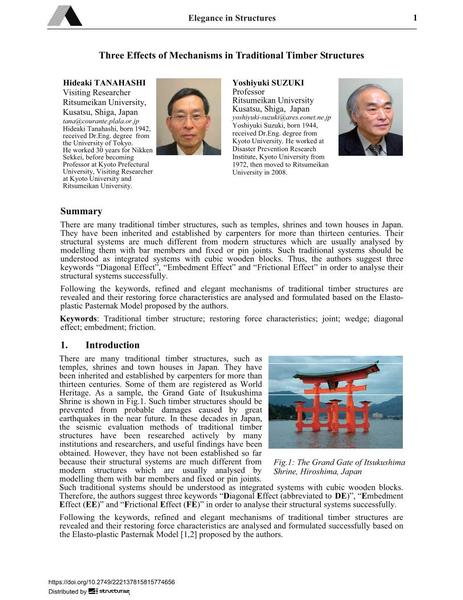Three Effects of Mechanisms in Traditional Timber Structures

|
|
|||||||||||
Bibliographic Details
| Author(s): |
Hideaki Tanahashi
Yoshiyuki Suzuki |
||||
|---|---|---|---|---|---|
| Medium: | conference paper | ||||
| Language(s): | English | ||||
| Conference: | IABSE Conference: Elegance in structures, Nara, Japan, 13-15 May 2015 | ||||
| Published in: | IABSE Conference Nara 2015 | ||||
|
|||||
| Page(s): | 198-199 | ||||
| Total no. of pages: | 8 | ||||
| Year: | 2015 | ||||
| DOI: | 10.2749/222137815815774656 | ||||
| Abstract: |
There are many traditional timber structures, such as temples, shrines and town houses in Japan. They have been inherited and established by carpenters for more than thirteen centuries. Their structural systems are much different from modern structures which are usually analysed by modelling them with bar members and fixed or pin joints. Such traditional systems should be understood as integrated systems with cubic wooden blocks. Thus, the authors suggest three keywords "Diagonal Effect", "Embedment Effect" and "Frictional Effect" in order to analyse their structural systems successfully. Following the keywords, refined and elegant mechanisms of traditional timber structures are revealed and their restoring force characteristics are analysed and formulated based on the Elasto- plastic Pasternak Model proposed by the authors. |
||||
| Keywords: |
joint friction wedge traditional timber structure restoring force characteristics diagonal effect embedment
|
||||
